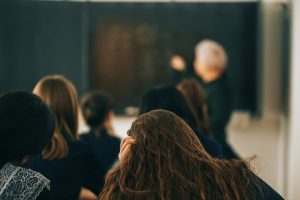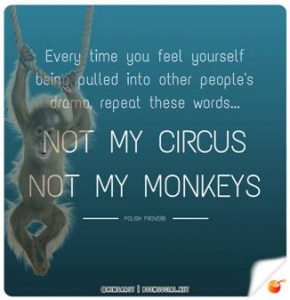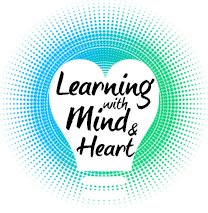Designing Effective Training

TRAINING THAT WORKS: Teaching effectively and affectively
Training isn’t very different from teaching. Training generally has more skill components and fewer conceptual components but the learning process is the same. Training is more likely to provoke transformative experiences because it involves connecting the four key elements of learning:
- Knowledge acquisition,
- Emotional engagement or caring,
- Skill development,
- Integration with a person’s life narrative or metacognitive system.
 When you train people they have to learn what to do, how to do it and why it matters.They also have to decide what skill to use under which circumstances and be able to think about their reasons for choosing that particular skill. This entire process engages learners and activates Zull’s “emotion molecules.” Experienced teacher/trainers can easily recognize the beginnings of a transformative experience. It’s called the Light Bulb Effect or the AHA Effect. When it happens, you can’t miss it.
When you train people they have to learn what to do, how to do it and why it matters.They also have to decide what skill to use under which circumstances and be able to think about their reasons for choosing that particular skill. This entire process engages learners and activates Zull’s “emotion molecules.” Experienced teacher/trainers can easily recognize the beginnings of a transformative experience. It’s called the Light Bulb Effect or the AHA Effect. When it happens, you can’t miss it.
Basic Principles…
- FOCUS ON LEARNING- You can’t design any effective training program until you know what participants need to learn and be able to do.This is why so many “off the shelf” training designs are ineffective. They have generic learning goals and don’t take into account what your participants already know or care about.
- Feelings- Ask yourself what feelings most effectively anchor this knolwedge in your participants’ heart/minds. These feelings should be positive and will probably come from previous experiences with the subject. Typical feelings are enthusiasm, curiousity, self-enhancement, self- confidence, to name a few. Take a moment to think of an example from your own experience. For example, if you are teaching students active listening skills, ask them to recall the last time they spoke to somebody who listened to them with undivided attention. What did that feel like? How was it different from an ordinary conversation?
- Information- The students may need to place this learning in a broader context than the one they previously used or make their information more accurate or complex. For example, if your are doing “training” about cross-cultural communication, you may want to give white students information about the reasons why the Black Lives Matter movement got started, or share some history about slavery or the civil rights movement.You may want to tell non-Asian students how the “model minority” myth got started. You may want to invite one or morepeople who are members of the group you are talking about to share their experiences with your students before you begin training. If people are learning to communicate about difficult topics, they need to have some understanding about the reasons for the difficulty and that usually involves some historical information or cultural analysis. There are large numbers of film clips on YouTube that can help with this process.
- Skills –Identify the skills that students need to develop to anchor this learning in their own life experience. If you know the people you are training, you should have observed some of the skill deficiencies before you begin designing the program. Examples of skills are self-disclosure (not blaming), non-judgmental feedback (I noticed that every time you talk about [whatever topic] your foot starts jiggling.) empathy, ability to reframe previous constructs or ideas, ability to manage personal discomfort, to apologize for inadvertantly offenseive remarks and other microaggressions. Categories of skills include interpersonal, conceptual/analytic, manual and behavioral.
- Metacognition – Explore the range of reasons why this particular information and skill set might matter to students.
 Does it match their idea of who they are or want to be/come (identity/self), what they love to do (creative expression) , what beliefs they hold about the way the universe works ( spiritual or meaning making) or what they hope to contribute to the human community (vocation). If your trainees are student leaders of any sort, they may simply need these new skills and knowledge to be more successful in their leadership roles. Remember that nobody learns anything they don’t care about. You can’t train people if they don’t understand why they need to know whatever it is you want them to learn. It’s not a mechanical process.
Does it match their idea of who they are or want to be/come (identity/self), what they love to do (creative expression) , what beliefs they hold about the way the universe works ( spiritual or meaning making) or what they hope to contribute to the human community (vocation). If your trainees are student leaders of any sort, they may simply need these new skills and knowledge to be more successful in their leadership roles. Remember that nobody learns anything they don’t care about. You can’t train people if they don’t understand why they need to know whatever it is you want them to learn. It’s not a mechanical process. - Planning – The most important part of designing effective training programs is careful planning, based on adherence to these principles. After you have carefully considered what you want your trainees to learn, you can evaluate the relevance of prepackaged designed and decide if they will help you achieve your goals.
Make yourself a planning sheet and include the following topics:
- Information – what should trainees understand historically and conceptually about this topic?
- Skills – make yourself a list of what you want trainees to be able to do and why
- Feelings – identify the trainees’ attitudes and feelings about this particular skill set
- Metacognition- are the trainees attending your program voluntarily? Do they understand how they can use what they learn to improve their performance? Click here to view Culturally Competent Workplace PPtx
EFFECTIVE FACILITATION : RUNNING GROUP CONVERSATIONS
Why running good conversations is so difficult: It’s not about you
When a person is designated as a group leader, either a professor or a group advisor, the assumption is usually that the leader knows more than anybody else and the leader’s opinion is very important. This attitude makes leaders less likely to listen deeply to the participants’ ideas and more likely to listen with attention to what they should probably say to the group. Effective facilitation requires serious listening, familiarity with the group’s issues and the ability to connect ideas and people so that they can realize what they have in common. Effective facilitation has two important goals: 1) creating an atmosphere of mutual respect, listening and understanding and 2) solving problems or addressing issues of concern to the group.- Seating matters. The best arrangement is a circle so that all participants can see each other and learn to read body language.
- Size matters. An ideal discussion group is about 8-10 people. The bigger the group the harder it is for the facilitator to keep track of the dynamics. In larger groups, having two facilitators is helpful. They should be seated at opposite sides of the circle.
- Rules of conversation matter. Particularly if a conversation is likely to involve discomfort or conflict, ask the participants to set up some rules for conversation before they start discussing the subject. These rules usually include not interrupting, taking responsibility for opinions rather than blaming other people, taking responsibility for feelings i.e. “I’m getting really angry,” not “You’re a fool for saying or believing that.”
- The facilitator’s role is to focus on process. This means commenting about the “emotional weather report,” i.e. people seem to be uncomfortable/confused/disconnected etc. right now. You can also observe or notice body language, who consistently talks to whom, who hasn’t spoken. Sometimes people talk about each other but don’t directly address each other. The facilitator should direct people to speak to each other and in the present tense. The facilitator should also be able to draw conclusions as they are warranted, using a tentative i.e. subjunctive, mode. After conclusions are presented, the facilitator should ask the group if the sense of the group has been expressed accurately.
- The facilitator should adopt an attitude of curious observation, not involvement. Facilitators should do their best to stay calm and detached. Detached does not mean uncaring. Emotional engagement from facilitators is usually destructive of effective group process.

- The single most important skill of facilitators is called active listening. This skill involves listening carefully, briefly summarizing what you heard, asking if your understanding is accurate and soliciting either points of agreement or disagreement from other members of the group.
- Read, practice, apprentice yourself to a more experienced facilitator. There are hundreds if not thousands of books about group process and dialogic conversations. Of Education, Fishbowls and Rabbit Holes (Fried, 2016, www.amazon.com) has a brief appendix about facilitation. Mypersonal favorite is Joining Together (D. Johnson and F. Johnson, 2009, 10th ed) . This book has a thorough discussion of many of the elements of group dynamics and facilitation. The Magic of Dialogue (D. Yankelovitch, 1999) is an excellent guide to creating conversations that encourage deep listening. Intergroup Dialogue (D. Schoem and S. Hurtado [eds] 2001) is an excellent resource for conducting conversations about inter-group differences.
It takes years to become an effective and skilled group facilitator. You can’t learn how to do this by reading about it. You have to begin observing groups and running groups and asking people to watch you do it. Group conversations are one of the most effective pedagogies we have for helping people learn both content and emotional self management at the same time. I am happy to respond to any questions about this subject at lrngmindheart@gmail.com.
Learning With Mind and Heart
